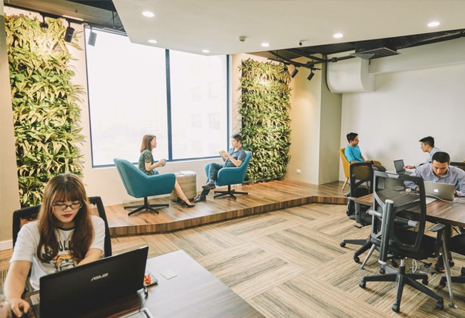
- June 12, 2023
- Opinion
The Key Impact of Lighting on Workplace Productivity
As a manager or CEO, enhancing the efficiency and productivity of human resources takes precedence. Countless hours are spent deliberating and strategizing on ways to improve efficiency, yet a fundamental principle often gets overlooked - lighting.
Workplace lighting can have a significant impact on employee productivity and well-being. Indeed, the overall sense of vitality or lethargy, alertness or drowsiness hinges on the flip of a switch.
An intriguing study conducted by the American School of Interior Design revealed that 68% of employees voiced concerns about inadequate lighting in their workplaces. How is it that a company, aiming to extract maximum efficiency from its human resources, disregards such a crucial factor that governs how people think, act, and contribute to their work?
Scientific evidence underscores that ambient lighting has the potential to substantially influence workers' pace of work and productivity.
Effects of Dim Lighting: Dim lighting is particularly suited for break areas as it creates a feeling of comfort, relaxation, and aids employees in shedding work-related stress. However, if dim lighting is employed in primary workspaces, it can strain employees' eyes, causing headaches and impaired vision.
Effects of Cool Lighting: Cool lighting, akin to natural daylight, can boost alertness, mood, and productivity. It suppresses the production of melatonin, thereby reducing fatigue. Consequently, cool lighting is often preferred in main office areas where heightened alertness and cognitive stimulation are essential. In essence, cool lighting proves more conducive to productivity.
Natural Lighting: Studies highlight that natural sunlight is most beneficial for fostering a productive workplace. During daylight hours, it is advisable to arrange office furniture to maximize employees' exposure to natural light. Natural light ensures improved visual clarity and well-being, with lower stress levels. However, as the day progresses, maintaining consistent intensity and amount of natural light becomes unfeasible, especially during evening shifts. To create an environment of creativity and efficiency, lighting that mimics natural light should be utilized.
Nevertheless, numerous methods exist to harness natural light while concurrently curbing energy consumption. Natural light harvesting sensors can adjust applicable light sources, such as LED fixtures or troffers (connected to light harvesting sensors), to specific light levels. The sensor modulates light levels based on the available natural light in a given location.
Indeed, proper lighting can work wonders. It can potentially curtail energy costs by up to 80% and enhance workplace productivity by approximately 40%.
Practical Application: Recognizing the impact of lighting on employees, managers and CEOs should consider these facets when shaping the work environment to elevate efficiency and employee contentment. Incorporating these insights during office space design and planning is of paramount importance. The following are key steps and recommendations:
Regular Lighting Assessments: Regularly assess lighting conditions across various areas to pinpoint deficiencies and areas requiring improvement.
Adaptive Lighting Solutions: Design workspaces with adjustable lighting options, enabling employees to customize lighting levels based on tasks and personal preferences.
Listening to Employee Feedback: Encourage employees to provide feedback on lighting conditions, aiding in understanding their needs and preferences.
Invest in High-Quality Lighting Fixtures: Opt for top-tier lighting fixtures to ensure consistent and comfortable illumination. Employing energy-efficient LED lighting systems can lead to enduring cost savings.
Collaboration with Experts: Collaborate with interior designers or lighting specialists to ensure that the office space is not only aesthetically pleasing but also functionally optimized.
By comprehending the far-reaching impact of lighting on employees, managers and CEOs can forge an environment that nurtures employee performance and satisfaction, thereby contributing to the overarching success of the organization.
-
Similar blog
- What is Nanomagnetic Sputtering

Subscribe to the GR OPTICS Newsletter Subsceribe now!
-
Stay informed!
Register now for the GR Optics newsletter.
- I agree to the receipt of this newsletter and know that I canunsubscribe anytime without any problems.
Get our latest information and new product information assoon as possible.

